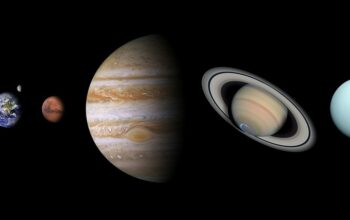Introduction to Trending Hardware in Engineering
Imagine a world where robots are not just assembly line workers but also home helpers, where buildings are constructed overnight by 3D printers, and where every device around you is connected and intelligent. This is not a tale of the future; it’s the reality we’re living in today. Engineering is undergoing a revolution, driven by technological advancements that are transforming industries and reshaping our daily lives. Here are five trending pieces of hardware that are changing the engineering landscape:
1. Humanoid and Quadruped Robots
Humanoid robots, with their advanced AI, are moving from factories to homes. Experts predict they’ll start doing household chores by 2026. Quadruped robots, like those from Boston Dynamics, are helping in search and rescue missions, proving their versatility and strength. These robots are not just machines; they’re a testament to how AI and robotics can combine to make our lives easier and safer.
2. 3D Printing Technology
3D printing, or additive manufacturing, is breaking the mold in construction and manufacturing. It produces complex components with minimal waste, enabling the rapid construction of buildings and the creation of customized medical implants and aerospace parts. For example, companies are using 3D printing to make prosthetic limbs that perfectly fit each patient, revolutionizing healthcare.
3. AI-Powered Chips
The AI chip market is booming, with giants like Intel, AMD, and NVIDIA driving innovation. These chips are the backbone of AI systems, enabling more efficient operations in both data centers and edge devices like smartphones and PCs. For instance, AI chips in self-driving cars analyze data in real-time, making the roads safer.
4. Internet of Things (IoT) Devices
IoT devices connect everything from traffic lights to home appliances, making cities smarter. Smart sensors in factories predict maintenance needs, reducing downtime and increasing productivity. In urban planning, IoT helps manage traffic flow and energy usage efficiently, creating more livable cities.
5. Semiconductor Technologies
The semiconductor industry is advancing rapidly, with new chip technologies like TSMC’s N3 offering higher efficiency and lower costs. These advancements enable faster and more powerful computing, crucial for applications in AI, smartphones, and other digital devices. The race to improve semiconductor manufacturing is also driving innovations in materials science and clean energy technologies.
Trending Hardware in Action
-
Robotics in Healthcare: Robotic-assisted surgeries improve precision and recovery times.
-
3D Printed Homes: Affordable and quick housing solutions for disaster zones and urban areas.
-
AI Edge Computing: Real-time data analysis on edge devices like smart home systems.
-
IoT in Transportation: Smarter traffic management reduces congestion and emissions.
-
Sustainable Semiconductors: Energy-efficient manufacturing processes reduce environmental impact.
These hardware trends are not just tools; they’re the architects of a more efficient, sustainable, and connected future. As engineering continues to evolve, we can expect even more exciting innovations to emerge, changing the way we live, work, and interact with technology.
References:
- https://technosofteng.com/blogs/future-of-engineering-trends-technologies-and-oppurtunities/
- https://orfme.org/expert-speak/tech-in-big-picture-emerging-trends-in-2025/
- https://www.infoq.com/articles/architecture-trends-2025/
- https://www.techinsights.com/blog/ai-market-outlook-2025-key-insights-and-trends
- https://semiengineering.com/tsmc-tech-symposium-2025/
- https://arxiv.org/pdf/2504.18765
- https://www.techinsights.com/blog/2025-semiconductor-industry-forecast-key-trends-insights
- https://www.queens.edu/internships/wp-content/uploads/sites/21/2025/04/CareerDevelopmentGuide2022a.pdf



